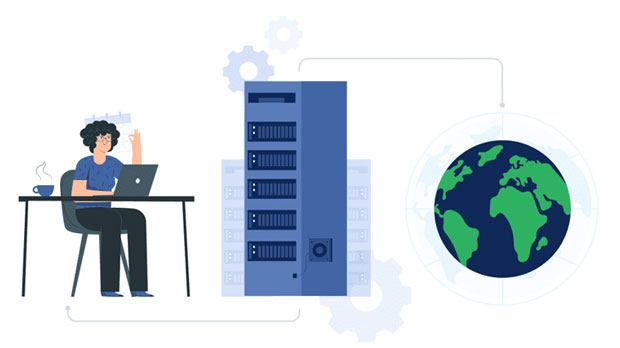Static ip proxies are widely used for a variety of tasks such as web scraping, data collection, or anonymous browsing. They offer a reliable and consistent connection by maintaining the same IP address over time, which is crucial for tasks that require stability and accuracy. Two major players in the static ip proxy space are PYPROXY and Luminati Proxy. In this article, we will provide an in-depth analysis of their features, performance, and user experience to help you make an informed decision. Introduction to Static IP ProxiesStatic IP proxies are designed to offer a permanent, unchanging IP address that allows users to maintain a consistent online presence. Unlike dynamic proxies, which change IP addresses frequently, static IP proxies are ideal for long-term tasks where consistency is key. They are often used in scenarios such as SEO, social media management, market research, and web scraping, where the user needs to interact with websites without getting blocked or flagged for suspicious activity.Both PyProxy and Luminati Proxy provide static IP proxy services, but each offers unique features, pricing, and performance. Understanding these differences is crucial for businesses and individuals looking for an effective proxy solution.PyProxy OverviewPyProxy is a popular proxy service known for its simplicity and affordability. It offers a wide range of proxies, including static IP options, that cater to different needs. PyProxy is particularly favored by users who need a quick and easy solution for tasks like web scraping and accessing geo-restricted content.One of PyProxy’s standout features is its ease of use. The platform provides an intuitive interface that makes it accessible even for beginners. Users can easily integrate PyProxy into their existing workflows, whether they are scraping data, managing multiple social media accounts, or testing their websites.However, PyProxy is not without its limitations. While it is affordable, it may not offer the same level of advanced features and support that larger proxy providers like Luminati offer. Users may encounter performance issues or slower speeds when using PyProxy for high-demand tasks, especially in regions with high traffic.Luminati Proxy OverviewLuminati Proxy, now known as Bright Data, is one of the most well-established names in the proxy industry. It offers a comprehensive set of features, including residential, mobile, and static IP proxies, making it a versatile choice for businesses with complex proxy requirements. Luminati is known for its robust network of over 72 million IPs, providing users with a broad selection of locations and IP types.Luminati’s static IP proxies are reliable and fast, making them ideal for businesses that need to perform large-scale web scraping, market research, or ad verification. The service offers advanced features such as IP rotation, session control, and geographic targeting, which allow users to customize their proxy usage to suit their specific needs.Despite its advanced features, Luminati Proxy is generally more expensive than PyProxy. Its pricing structure can be complex, with various plans that may not be cost-effective for small businesses or individual users. However, for large enterprises and demanding tasks, Luminati offers unmatched performance and flexibility.Key Differences in Features and PerformanceWhen comparing PyProxy and Luminati Proxy, there are several key factors to consider: ease of use, network size, speed, support, and pricing.1. Ease of Use: - PyProxy is designed with simplicity in mind. It offers an easy-to-use interface that doesn’t require a steep learning curve, making it suitable for beginners. - Luminati, on the other hand, provides a more complex interface with a wide range of customization options. While it may take time to get used to, Luminati offers more flexibility for advanced users.2. Network Size and Coverage: - PyProxy’s network is relatively smaller compared to Luminati’s. While it offers static IP proxies, it may not provide the same level of global coverage as Luminati, which boasts a vast network of over 72 million IPs from multiple countries and regions. - Luminati’s extensive network is ideal for large-scale operations that require access to a wide range of IP addresses and geographic locations.3. Speed and Performance: - Both PyProxy and Luminati offer fast connections, but Luminati generally delivers superior speed and performance due to its larger and more distributed network. - PyProxy users may experience occasional slowdowns, especially when handling high-demand tasks or accessing proxies from regions with limited server availability.4. Support and Customer Service: - PyProxy offers standard customer support, including ticketing and email responses. However, it may not have the same level of responsiveness and support options as Luminati. - Luminati provides dedicated support with a team of experts available around the clock. It also offers a more comprehensive knowledge base, user guides, and technical resources for troubleshooting.5. Pricing: - PyProxy is generally more affordable, making it an attractive option for individuals or small businesses on a budget. The service offers flexible pricing plans that cater to different needs, but users may sacrifice some advanced features for the lower price. - Luminati, with its expansive network and advanced features, comes at a higher price point. Its pricing model is more suited to large enterprises that require high performance and global reach.Best Use Cases for PyProxy and Luminati Proxy1. PyProxy Use Cases: - Small-scale Web Scraping: If you are running a small-scale web scraping operation and don’t need to access a large number of IPs or locations, PyProxy is an affordable and straightforward choice. - SEO and Social Media Management: PyProxy’s static IP proxies are suitable for managing multiple social media accounts or performing SEO tasks where IP consistency is required. - Accessing Geo-restricted Content: For individuals or businesses looking to access geo-restricted content, PyProxy provides a cost-effective solution with reasonable speed.2. Luminati Use Cases: - Large-scale Web Scraping: If you need to scrape data from numerous websites with a high success rate and minimal blocks, Luminati’s extensive network and advanced features make it an ideal choice. - Market Research and Ad Verification: Luminati is well-suited for businesses that need to conduct large-scale market research or verify online advertisements in different regions and markets. - Enterprise-level Solutions: For large enterprises with demanding proxy needs, Luminati provides the performance, support, and flexibility necessary for success.Conclusion: Which Proxy Service is Right for You?Both PyProxy and Luminati Proxy offer valuable services in the realm of static IP proxies, but their features, performance, and pricing vary significantly. PyProxy is ideal for individuals and small businesses looking for an affordable and easy-to-use solution for basic tasks. It is perfect for web scraping, SEO, and accessing geo-restricted content on a smaller scale.Luminati Proxy, on the other hand, is the go-to choice for enterprises and businesses that require a robust, high-performance proxy solution. Its advanced features, large network, and superior support make it a powerful tool for large-scale operations and high-demand tasks.Ultimately, the best choice depends on your specific needs, budget, and the scale of your operations. If you are just starting out or need a cost-effective solution, PyProxy may be the right fit. However, if your business demands flexibility, speed, and global reach, Luminati Proxy is the more suitable option.
Sep 19, 2025



































































